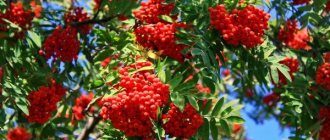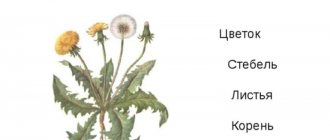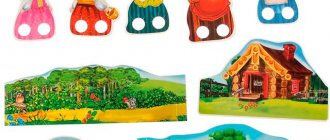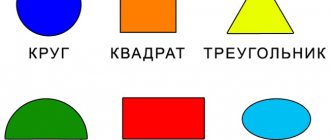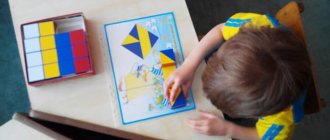- Reports and messages
- Plants
- Spruce
Spruce belongs to the pine family.
This is an evergreen tree, a symbol of the New Year. Spruce can grow up to fifty meters in height and live up to three hundred years. In the USA there is a spruce tree that is eight hundred and fifty-two years old. There are about forty-five varieties of tall spruce trees. Of these, the following can be noted: Eastern European or ordinary, Siberian, Oriental, Korean, Ayak, Tien Shan, Glen spruce, Canadian, red, Serbian, blue.
Low spruces are called dwarf. Dwarf spruces have found wide application in the field of landscape design and are often used in home and interior decoration. There are the following types of dwarf spruce trees: Push spruce, Nidiformis spruce, Nana spruce, Bialobok spruce.
The distribution area of spruce is very large. The common spruce has the largest distribution area: Western Europe, Russia and the Urals. Siberian and Ayan spruce grows in Siberia, and eastern spruce grows in the Caucasus. There are varieties of spruce that grow in certain climates: for example, only on the Kuril Islands, southern Sakhalin and the island of Hokkaido.
Spruce reproduces with the help of heterosexual cones. When the seeds ripen, the cone falls to the ground and is carried away by the wind, sometimes very far. Spruce begins to reproduce after fifteen years of growth.
Spruce is not only an ornamental plant, it is widely used in various fields. Spruce bark, wood, pine needles and cones are used.
Spruce wood is very “musical” and has the ability to “hold” sound. The speed of sound propagation in spruce is fifteen times greater than the propagation of sound in air. Previously, in Rus' they made harps from spruce, but now they make soundboards for cellos, violins and guitars. To do this, choose a tree without curls and knots. Since houses were previously built from spruce, restorers are looking for pieces of spruce in the ruins of old houses that will be used in restoration: it is believed that such spruce has acquired even greater musicality with age. They tried to replace the spruce with another tree, but they did not find a second such “musical” tree.
The second major area of spruce is wood chemical production. Cardboard, paper, cellulose are made from it, and turpentine is obtained. Tannins are obtained from the bark, which are used in industry for tanning leather and in medicine.
Essential fractions and volatile oils are isolated from the needles, which are used in the perfume industry and medicine.
Spruce is widely used in ornamental gardening and park construction. Spruce trees are often planted along roads for protection from the wind. Nuts from the cones serve as food for birds and animals.
In many countries, spruce is decorated for the New Year. In America, the Christmas tree is decorated long before Christmas. They decorate mainly with edible decorations: tangerines, sweets and red and white candies in honor of Jesus Christ.
In Germany, Christmas trees glow and shimmer. They are decorated with balls, garlands, and Santa Claus figurines.
In Finland, trees are protected, so they prefer to decorate artificial Christmas trees with homemade decorations.
In many countries, for the New Year they decorate not a Christmas tree, but other trees: in China - a tangerine or orange tree, in Mexico - a palm tree, in Africa - a baobab tree. Often in Asian countries they dress up not a tree, but a rake in order to “rakes” more wealth in the new year.
image of Eli
Since childhood, at Christmas and New Year, people have become accustomed to smelling fir branches.
Mixing with the smell of tangerines, this fragrant pine aroma was a harbinger of a miracle, gifts, new experiences and the New Year. For many centuries, Spruce has personified the symbol of a new cycle. In ancient times, remaining evergreen, Spruce was an allegory of eternal youth and immortality, longevity and fidelity.
For the same reasons, the Spruce “spruce branches” were and remain in many villages a sign of a bygone life. During the funeral procession, “spruce branches” are thrown at the feet, saying goodbye to the departed. Their age has ended, but has passed into eternity.
In Scandinavia, spruce was used for ritual bonfires. The resinous firewood gave the fire unique strength.
Home and Kremlin Christmas trees of the country
The main status is given to Christmas trees, which are held in Moscow, first in the House of Unions, and then in the Kremlin Palace of Congresses. After moving to KDS, the main Christmas tree is also called the Kremlin tree. Children throughout the Soviet Union dream of attending the Kremlin Christmas tree. Initially, the best students from the capital's schools are invited to attend. Subsequently, particularly distinguished children from other places in the Soviet Union come to Moscow.
In modern Russia, the main Christmas tree is called the spruce, which is installed on the Cathedral Square of the Kremlin. This happened for the first time in December 1996. Over the years, due to climatic conditions, the living tree was replaced with an artificial one.
In 2021, a 90-year-old tree with a height of 27 meters was chosen as the main Christmas tree in Russia. The lower branches of the beauty had a span of 6 meters. She lived in the Borodino forestry, Mozhaisk district, Moscow region.
Finding the main Christmas tree is a very important and responsible matter. They begin a few months before the New Year. Sometimes, in order to select the “right” beautiful tree, helicopter reconnaissance and photography are carried out. Several trees are nominated to play the role of the first beauty of the forest, which must meet certain parameters. Age – more than 90 years, height – more than 25 meters, diameter at the place of its construction – more than 70 centimeters.
Selected from hundreds of similar trees, the main Christmas tree arrives in Moscow by a special road train, and is delivered directly to the Kremlin through the Spassky Gate.
Then comes the equally important stage of decorating the Christmas tree, which lasts several days and is always thought out in advance. A garland exceeding a kilometer in length is being prepared, non-standard large balls and toys are being ordered. The Star of Bethlehem is placed at the top of the modern main Christmas tree.
Where does Spruce grow?
Spruce forests are found throughout Russia. These are mostly dense, dense thickets with some undergrowth.
Despite the fact that Spruce develops best in an open area, its shade-tolerant counterparts are found.
The most common type of tree is “Normal Spruce”. It is found in the European part of Russia, Finland and northern Europe. Spruce groves are found in both Siberia and the Urals.
Brothers of the Norway Spruce can be found in the Caucasus and the Far East, on the Kuril Islands and Sakhalin. Even in North America and China, certain species of this thorny, fragrant tree grow.
Popular message topics
- The works of Valentin Kataev
V.P. Kataev began writing at the age of 9. He divided his notebook into two columns and wrote down everything he came up with: poems, stories, novellas, elegies. - Hippies
The hippie subculture originated in the United States in the 60s. It is believed that the prerequisite for this was the economic boom, because some young people deliberately abandoned routine activities in order to live their lives in a way that - Methods of geographical research
As in other sciences, there are special research methods in geography. Let's look at some of them. In ancient times, people obtained their own food and created homes. In the caves they depicted their cave paintings,
What does El look like?
Spruce is a tall, stately tree with a straight, strong trunk and a dense crown. The branches are arranged in a pyramid and have spiny needles. The bark of Spruce is dense and covered with scales.
The height of Spruce can reach 30 meters, while the trunk volume of many species exceeds 1.5 meters
The average lifespan of a tree is 250 – 300 years. There are centenarians up to 600 years old.
After 10–15 years of life, the tree changes its root system, getting rid of the main root. That is why in the forest you can find these wind-fallen giants with their roots turned upside down.
The emergence of the custom of decorating the Christmas tree in Germany
It has been established that the tradition of decorating the Christmas tree originates in Germany. This happens, according to researchers, in the 16th-17th centuries. It is not known for certain who first proposed decorating a spruce tree. Researchers have different opinions. Some believe that this happened in Alsace. It is known that the authorities of one of the cities ordered a forester to cut down a Christmas tree for them, and several decades later written sources report that the custom has become general.
Another legend connects the appearance of the Christmas tree with the religious reformer Martin Luther, who began installing and decorating Christmas trees in his home. The authority of the religious figure was so great that many of his compatriots soon followed his example. An engraving has survived to this day in which Martin Luther is depicted next to a decorated Christmas tree.
The new custom quickly spread in Germany, and by the middle of the 18th century it became ubiquitous. Christmas trees are decorated with flowers made of colored paper and gold foil; apples, sugar and other sweets wrapped in gold and silver paper are hung on the tree. In addition, candles begin to be lit on the holiday tree.
From Germany, the custom of the Christmas tree gradually penetrates other European countries, and soon crosses the ocean and takes hold in America.
Medicinal properties of Spruce
Fir cones, pine needles and resin are used for medicinal purposes.
The needles contain bactericidal substances, amino acids, chlorophyll, vitamins and phytoncides. Spruce needles are rich in vitamin C, the concentration of which increases in winter, therefore, since ancient times, pine “tea” has been an excellent remedy for scurvy and at the same time strengthened the entire body.
Daily consumption of 3–4 spruce needles for a month can restore immunity and increase resistance to a number of viral diseases.
Several spruce branches placed in a vase in a room can kill harmful bacteria in the room, leaving a pleasant aroma in the air.
Fir cones are rich in tannins and essential oils. They also contain copper, manganese, aluminum, and iron.
Essential oils are used in the fight against acute respiratory infections and diseases of the upper respiratory tract.
Syrup from the buds of Spruce is prescribed for microinfarctions.
A decoction of pine needles is used by inhalation to treat sore throat and sinusitis.
Spruce resin or resin has antiseptic properties and can be used in ointments to heal wounds and ulcers.
Reproduction methods
Growing from a nut
Typically, spruce cones for propagation are harvested in the fall. Nuts or seeds found in cones are usually stored in a cool, dry place. The nuts are removed from the cones 2-3 months before sowing, after which they need to be stratified to soften the shell and allow better germination.
At the end of winter or beginning of spring, the seeds are sown in the ground, the crops are placed in a warm, bright place and watered abundantly. As soon as sprouts appear, watering is reduced slightly. Young fir trees are planted in open ground in the second year, and it is desirable that they immediately end up in a permanent place.
Spruce seedlings grow quite slowly. It is important to protect them not only from pests and diseases, but from bad weather: rain, strong wind and scorching sun.
Growing from a branch
Another method of propagating spruce is cuttings. Winter cuttings of spruce give good results; they are planted in the ground in the spring, when the buds swell. By planting cuttings in the summer, they will grow 3-4 times slower compared to winter cuttings; rooting usually takes 2-3 months. It is best to harvest cuttings in the spring (late April - early May); root formation occurs within 70-80 days. After 3-5 months, the roots reach a length of about 20 cm. The best temperature for cuttings of spruce substrate at a depth of 5 cm should be 13-20°C and 10-19°C air.
The cuttings are planted in the ground at an angle of 20-30°, to a depth of 1 cm. Whether it is a greenhouse, box or other container, the distance between the seedlings should be 5x5 cm. After which, we cover it with a glass frame and put gauze for shading.
Applications of Spruce
Spruce wood is the most common material for construction and fuel. The wood is also used to make paper.
Spruce wood is very soft and straight-grained. Despite its widespread use in construction, untreated wood is short-lived and quickly rots. That is why spruce wood is treated with antiseptics and mordants.
At the same time, Spruce wood is included in many modern materials, such as fiberboard, chipboard, laminated veneer lumber and others.
The musical properties of spruce wood have been noticed for a long time, so soundboards, bodies and other parts of musical instruments are made from this fragrant wood.
Leave your comment
It will be easier for foreign students to stay in Russia
Reading time: 1 minute
An Italian teacher gave children a summer assignment and became famous
Reading time: 4 minutes
More than 347 thousand people take part in the Unified State Examination in social studies
Reading time: 1 minute
All-Russian student graduation will take place on July 10
Reading time: 2 minutes
Rosobrnadzor: almost half of teachers do not reach the basic level of training
Reading time: 2 minutes
Moscow State University again took first place in the ranking of the best universities in Russia
Reading time: 1 minute
Gift certificates
Responsibility for resolving any controversial issues regarding the materials themselves and their contents is taken by the users who posted the material on the site. However, the site administration is ready to provide all possible support in resolving any issues related to the work and content of the site. If you notice that materials are being used illegally on this site, please notify the site administration using the feedback form.
All materials posted on the site were created by the authors of the site or posted by users of the site and are presented on the site for informational purposes only. Copyrights for materials belong to their legal authors. Partial or complete copying of site materials without written permission from the site administration is prohibited! The opinion of the administration may not coincide with the point of view of the authors.
Source
Abstract of the educational activity for cognitive development “Forest Beauty Spruce” for children of the older group
Abstract of GCD on cognitive development using mnemonics and research technology
with children of senior preschool age.
Fedoseeva Anastasia Sergeevna
Topic: “ Forest beauty spruce ”
.
Goal: development of environmental culture of children .
Integration of educational areas: " Cognitive development "
,
“Speech
development ” ,
“Physical
development ” ,
“Artistic and aesthetic
development ” ,
“Social and communicative
development ” .
Educational field " Cognitive development "
1. To form cognitive interest , to identify and enrich children’s about the forest as an ecosystem.
2. Give an idea of the importance of spruce in the life of forest inhabitants and the use of this tree by humans.
3. Continue the formation of environmental consciousness in children’s .
4. To promote the accumulation in children of specific ideas about the characteristic features of coniferous trees.
5. Improve skills in working with paper using the origami
.
6. Develop curiosity , attention, logical thinking.
7. Foster a caring, respectful attitude towards nature.
Educational field "Speech development "
1. Activate the dictionary on the topic.
Educational field "Physical development "
1. Exercise children in relaxation techniques.
2. Develop gross motor skills , motor skills of the fingers
Educational field “Artistic and aesthetic development ”
.
1. Improve skills in working with paper using the origami
.
2. Develop creativity.
Educational field “Social and communicative development ”
.
1) Contribute to the creation of a positive emotional mood, the formation of readiness for joint activities with peers.
Equipment: artificial Christmas trees; spruce and pine twigs and cones; illustrations depicting a woodpecker, crossbill, squirrel, mouse; branches, cones and seeds of spruce and pine; letter from Old Man - Lesovichka ; mnemonic table for I. Tokmakova’s poem “Eli”
; 10*10 squares made of green double-sided paper.
